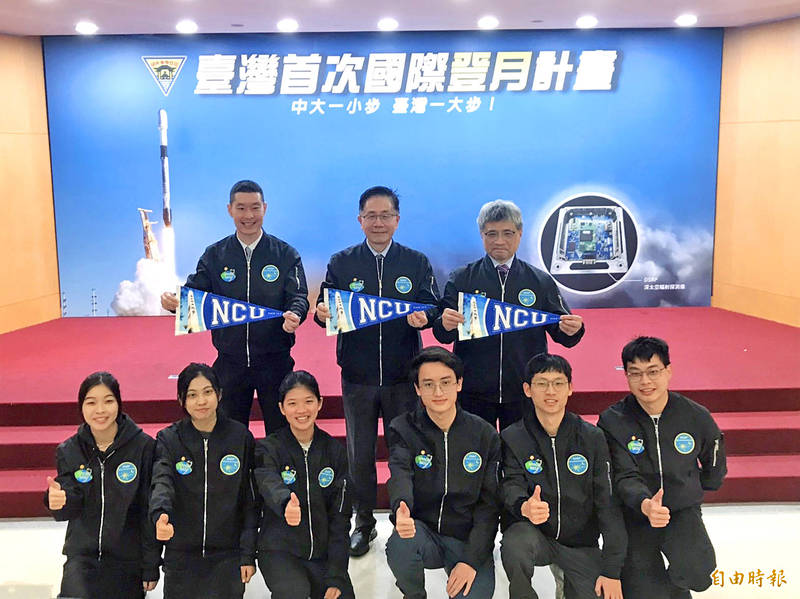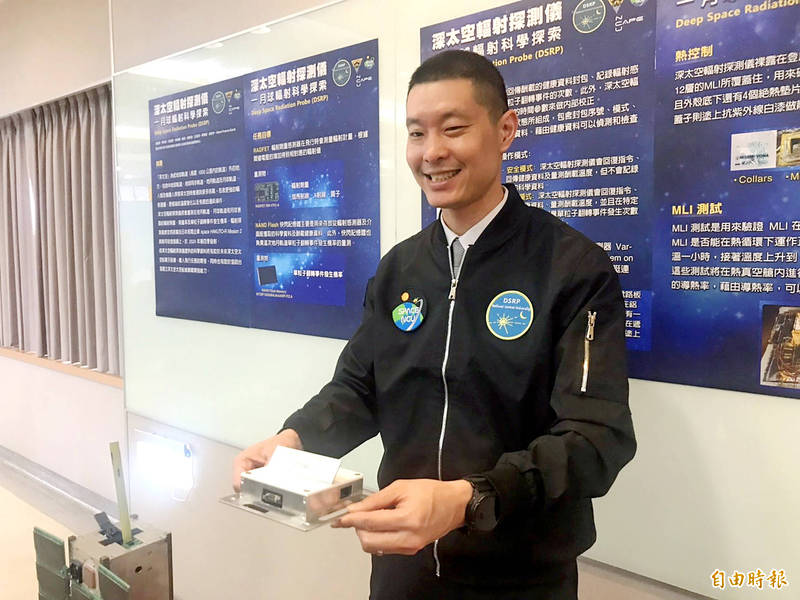《TAIPEI TIMES》 NCU probe ready for lunar mission

Members of National Central University’s Deep Space Radiation Probe research team pose for a photograph at a news conference in Taipei yesterday. The probe could be launched into space in the fourth quarter of this year after researchers confirmed that the system is ready. Photo: Yang Mien-chieh, Taipei Times
By Shelley Shan / Staff reporter, with CNA
The Deep Space Radiation Probe developed by National Central University (NCU) could be launched into space in the fourth quarter of this year after researchers confirmed that the system is ready for the nation’s first moon mission with a Japanese start-up.
“Pleased to report that we have successfully completed the handover of the National Central University Deep Space Radiation Probe (DSRP) payload to ispace Inc for integration with the Hakuto-R Mission 2 Resilience lunar lander,” NCU Department of Space Science and Engineering professor and dean Loren Chang (張起維) wrote on Facebook.
“Final payload software updates and functional checks were performed to verify that the DSRP flight model is ready for the mission to characterize the ionizing radiation environment from the Earth to the moon and its effects on electronics,” he wrote.
“Thank you to the student members of the DSRP payload team for designing, implementing and qualifying Taiwan’s first lunar payload in 21 months, as well as the ispace team for your support and guidance. We look forward to launching in Q4 of this year, as well as continuing collaboration and exchanges on this and future missions,” he wrote.
Various nations have begun planning missions to the moon in the past few years, hoping to establish permanent bases to harness lunar resources, Chang told a news conference in Taipei yesterday.
Increasingly more opportunities would be available in the near future for small and medium-sized satellites to ride along with larger projects to deep space or the moon, he said.
“Deep space is more than 2,000km away from Earth, and ionizing radiation in deep space is expected to create problems for electronic devices and life forms flying in it. However, the radiation is either blocked by the Earth or absorbed by the atmosphere,” Chang said.
“To have a deeper understanding of space radiation, we hope to measure it from Earth to the moon and the speed of its accumulation, which can serve as a reference for space missions or be considered when designing electronic and space products,” he added.
There are strict requirements for the size, weight and power consumption for the payload system, he said.
The weight must be less than 400g, which is equivalent to one bag of tea, and only slightly larger than the palm of a human hand, he said.
“It also needs to survive in the extreme temperatures of space for at least four months, and [we must] ensure that it does not crash and can perform its mission,” Chang said.
新聞來源:TAIPEI TIMES

National Central University Department of Space Science and Engineering dean Loren Chang holds a model of the Deep Space Radiation Probe in Taipei yesterday. Photo: Yang Mien-chieh, Taipei Times












